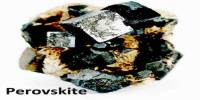Researchers are aiming to replace the liquids frequently utilized in today’s lithium-ion batteries with solid materials in order to create batteries that offer more power and run more safely.
A research team from Brown University and the University of Maryland has produced a novel solid-state battery material that comes from an odd source: trees.
The researchers demonstrated a solid ion conductor that combines copper with cellulose nanofibrils polymer tubes generated from wood in a study published in the journal Nature. The researchers claim that the paper-thin material has a 10 to 100-fold higher ion conductivity than existing polymer ion conductors. It might serve as a solid battery electrolyte or an ion-conducting binder for an all-solid-state battery’s cathode.
“By incorporating copper with one-dimensional cellulose nanofibrils, we demonstrated that the normally ion-insulating cellulose offers a speedier lithium-ion transport within the polymer chains,” said Liangbing Hu, a professor in the University of Maryland’s Department of Materials Science and Engineering. “In fact, we found this ion conductor achieved a record high ionic conductivity among all solid polymer electrolytes.”
Hu’s lab collaborated with Yue Qi’s lab at Brown University’s School of Engineering on the project.
The lithium ions move in this organic solid electrolyte via mechanisms that we typically found in inorganic ceramics, enabling the record high ion conductivity. Using materials nature provides will reduce the overall impact of battery manufacture to our environment.
Qi
Electrolytes manufactured from lithium salt mixed in a liquid organic solvent are utilized in today’s lithium-ion batteries, which are used in everything from cellphones to automobiles. The electrolyte’s duty is to transport lithium ions between the cathode and anode of a battery. Liquid electrolytes are effective, although they do have certain drawbacks.
Dendrites, or small filaments of lithium metal, can develop in the electrolyte at high currents, causing short circuits. Liquid electrolytes are also manufactured using flammable and poisonous compounds that can ignite.
Solid electrolytes, which may be constructed from non-flammable materials, have the ability to inhibit dendrite penetration. So far, the majority of solid electrolytes studied have been ceramic materials, which are excellent at conducting ions but are also dense, inflexible, and brittle. Cracks and fractures can occur as a result of stresses encountered during manufacture, as well as charging and discharging.
The material used in this study, on the other hand, is thin and flexible, similar to a sheet of paper. Its ion conductivity is comparable to that of ceramics.
Qi and Qisheng Wu, a senior research associate at Brown, used computer simulations of the copper-cellulose material’s tiny structure to figure out why it can conduct ions so efficiently.
Copper increases the distance between cellulose polymer chains, which are generally closely packed bundles, according to the modeling research. The increased spacing acts as ion superhighways, allowing lithium ions to pass through relatively unhindered.
“The lithium ions move in this organic solid electrolyte via mechanisms that we typically found in inorganic ceramics, enabling the record high ion conductivity,” Qi said. “Using materials nature provides will reduce the overall impact of battery manufacture to our environment.”
In addition to serving as a solid electrolyte, the novel material may also serve as a solid-state battery’s cathode binder. Cathodes must be significantly thicker than anodes in order to match their capacity.
However, such thickness can obstruction conduction, lowering efficiency. Thicker cathodes must be enclosed in an ion-conducting binder in order to function. The researchers exhibited what they claim to be one of the thickest functioning cathodes yet recorded using their novel material as a binder.
The researchers are optimistic that the novel material will pave the way for solid-state battery technology to reach the mainstream market. The research at Brown University was supported by the National Science Foundation (DMR-2054438).
















